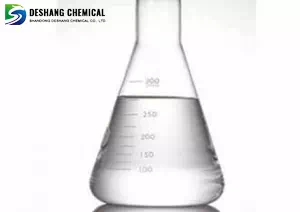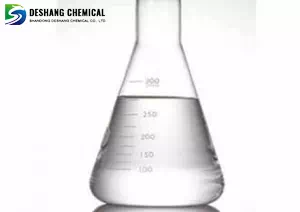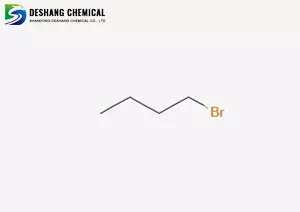All Categories



1-Bromobutane CAS 109-65-9, 1-Bromobutane, CAS 109-65-9
1-bromobutane (CAS 109-65-9) as a multifunctional halogenated hydrocarbon, its core value lies in:Irreplaceable synthetic position: Key intermediate for pharmaceuticals/pesticides, with an annual global demand of over 120,000 tons.
CAS : 109-65-9
Formula : C4H9Br
Mol. wt. : 137.02
EINECS : 203-691-9
| CAS | 109-65-9 |
| Molecular formula | C4H9Br |
| Molecular weight | 137.02 |
| EIENCS | 203-691-9 |
| Form | Liquid |
| Melting point | -112 °C |
| boling point | 100-104 °C |
| Density | 1.276 g/mL at 25 °C |
| Solubility | 0.6g/l |
| PKA | / |
| Color | Clear colorless to light yellow |
| Storage temp | Store below +30°C. |
Molecular formula and structure
Molecular formula: C₄H₉Br
Molecular weight: 137.02 g/mol
Structure: Linear alkyl bromide (primary halogenated hydrocarbon), containing bromine substituents.
Appearance: Colorless and transparent liquid with a faint aromatic odor. Stable under light, but may turn yellow after long-term storage
1-bromobutane (CAS 109-65-9) as a multifunctional halogenated hydrocarbon, its core value lies in:
Irreplaceable synthetic position: Key intermediate for pharmaceuticals/pesticides, with an annual global demand of over 120,000 tons;
Green process breakthrough: Guanidine catalysis + alkane solvent system reduces pollution and promotes capacity increase;
Safety risks are controllable but need to be vigilant: flammability and ecotoxicity require strict operation norms.
Pharmaceutical Synthesis
Anesthetic: A key intermediate for the synthesis of tetracaine hydrochloride.
Drug intermediates: Used in the preparation of antiviral drugs and antibiotics (such as benzoate).
Pesticides and fungicides
The synthesis of dimethylpyrimethanil and ethamethanil (for the control of powdery mildew) accounts for 30% of the demand for pesticide intermediates.
Fine chemicals
Alkylation reagent: Production of tetra-n-butylammonium bromide (phase transfer catalyst).
Grignard reagent: Used for carbon chain extension in organic synthesis.
Solvents and extractants: Extraction and separation of rare metals (such as indium and gallium).
New Materials and Functional Chemicals
Synthetic ionic liquids (such as 1-butyl-3-methylimidazolium bromide) are used as battery electrolytes.
Toxicity data
Acute toxicity: Oral LD₅₀ = 2761 mg/kg in rats; Irritating to eyes and skin (rinse with clean water for 15 minutes after contact).
Environmental risk: Highly toxic to fish (LC₅₀ = 36.7 mg/L, blackhead fish), prohibited from being discharged into water bodies.
Storage and Operation
Storage conditions: Cool and well-ventilated place (≤30℃), away from light and sealed, isolated from oxidants and alkali metals.
Protective measures: Wear a gas mask, nitrile gloves and goggles during operation.
Fire extinguishing agents: dry powder, carbon dioxide, foam (direct running water is prohibited to prevent vapor diffusion).
Leakage Emergency response
Minor leakage: Adsorb with sand and soil; Large-scale leakage: Build embankments, cover with foam and then recycle.
* Prompt reply and 24 hours online, professional team to provide best price and high quality product.
* Sample testing support.
* Every batch of products will be tested to ensureits quality.
*The packing also can be according the customers` requirment.
*Any inquiries will be replied within 24 hours.
*we provide Commerical Invoice, Packing List, Bill of loading, COA , Health certificate and Origin certificate. If your markets have any special requirements, let us know.